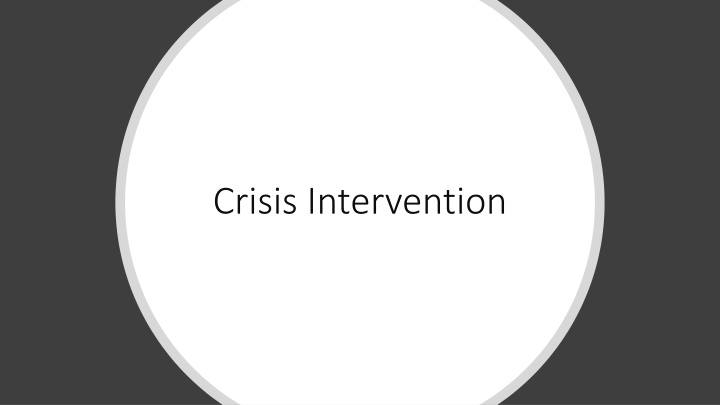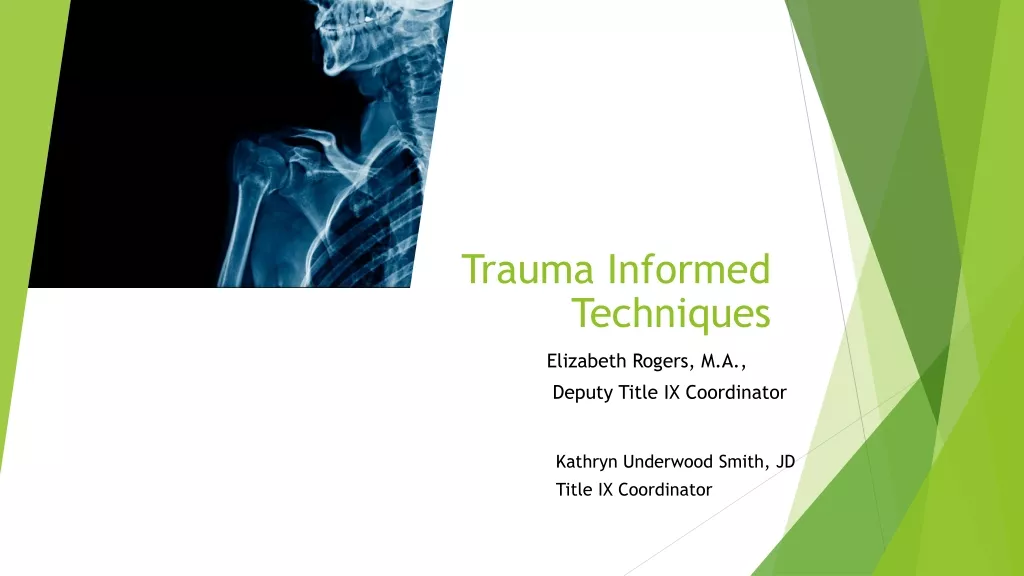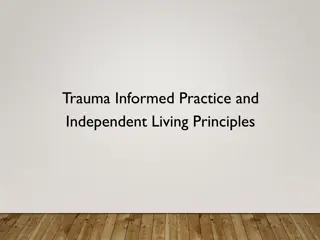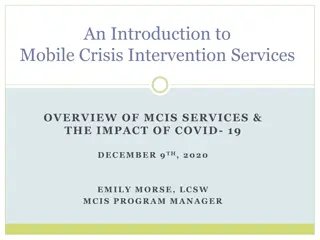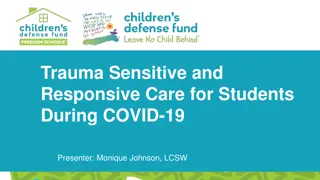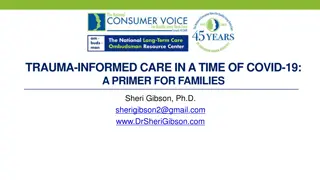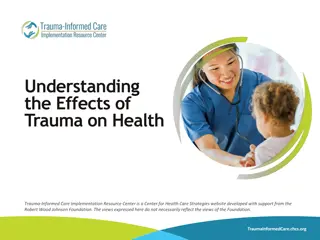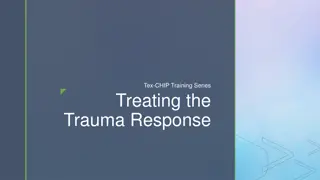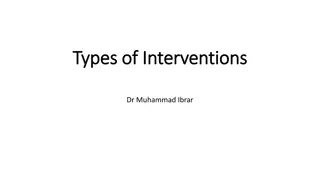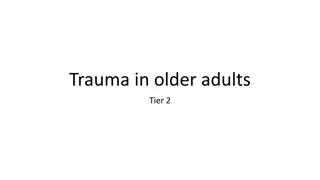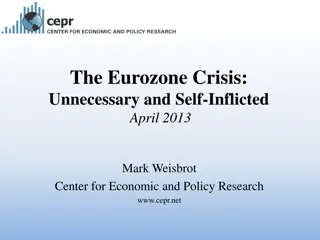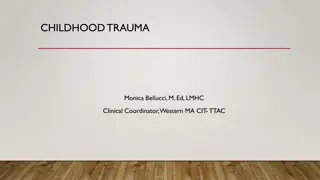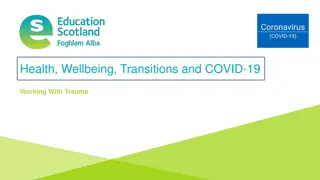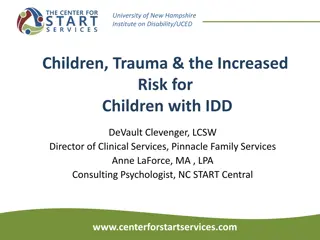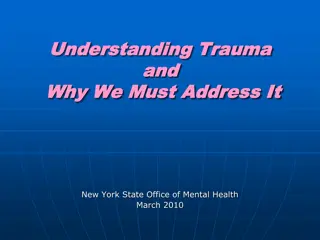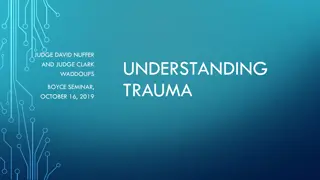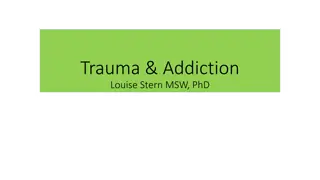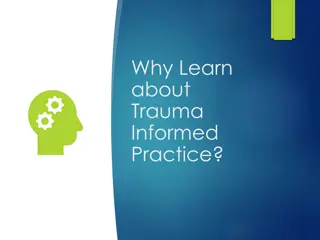Crisis Intervention and Trauma Support Overview
Crisis intervention aims to provide immediate assistance to individuals facing overwhelming situations, helping them cope with mental, physical, emotional, and behavioral distress. Traumatic experiences can disrupt a person's sense of control, connection, and meaning-making. The goals include reducing reactions to a crisis, restoring functioning, normalizing reactions, and offering reassurance. The intervention steps involve contact, safety, information gathering, stabilization, social support, and collaborative services. Key aspects include engagement, safety, comfort, and practical assistance.
Download Presentation

Please find below an Image/Link to download the presentation.
The content on the website is provided AS IS for your information and personal use only. It may not be sold, licensed, or shared on other websites without obtaining consent from the author.If you encounter any issues during the download, it is possible that the publisher has removed the file from their server.
You are allowed to download the files provided on this website for personal or commercial use, subject to the condition that they are used lawfully. All files are the property of their respective owners.
The content on the website is provided AS IS for your information and personal use only. It may not be sold, licensed, or shared on other websites without obtaining consent from the author.
E N D
Presentation Transcript
Crisis an event where a person is faced with a situation that pushes him or her beyond their capacity to cope and continue to function normally Crisis Intervention methods used to offer short-term, immediate help to individuals who have experienced an event that produces mental, physical, emotional, and/or behavioral distress
What Is Trauma? Traumatic experiences overwhelm our capacity to Have a sense of control over ourselves and our immediate environment Maintain connection with others Make meaning of our experiences Our reactions determine whether an event is traumatic, not the severity of the event itself. An event that is traumatic for one person might not be traumatic for another person.
Goals of Crisis Intervention Reduce the intensity of the person s physical, mental, emotional, and behavioral reactions to a crisis/traumatic event. Help the individual return to the level of functioning they were at before the incident. Normalize and validate victims reactions are a normal attempt to cope with an abnormal situation. Reassure victims reactions are temporary and there is no specific timetable for recovering from a traumatic event.
Crisis Intervention Steps Crisis Intervention Steps Contact and Engagement Safety and Comfort Information Gathering Stabilization Connection with Social Supports Linkage with Collaborative Services Coping Information Practical Assistance National Child Traumatic Stress Network, National Center for PTSD, Psychological First Aid: Field Operations Guide, 2nd ed. (2006).
Contact and Engagement Introduce yourself Explain your role Determine immediate needs Language, cultural, physical/mobility limitations
Safety and Comfort Ensure immediate physical safety Attend to physical comfort Attend to children separated from parents/guardians Protect from additional trauma or trauma reminders Give special consideration for acutely bereaved individuals Attend to special needs of children and adolescents Provide simple information about response and services Facilitate a sense of predictability and control
Stabilization Normalize feelings/emotions and resulting responses/reactions Accommodate decreased coping skills Empower victims to regroup and reengage
Information Gathering Nature/severity of experiences during the incident Death of a family member or close friend Concerns about immediate post-incident circumstances and/or if there is an ongoing safety threat Separation from/or concerns about safety of loved ones (This could even include the suspect.) Physical ailments or need for medication Losses incurred (home, school, property, pets, documents)
Information Gathering (continued) Extreme feelings of guilt or shame Thoughts of harming self or others Lack of adequate social support network Prior alcohol or drug use Prior exposure to trauma or loss Prior psychological/mental health needs
Practical Assistance Identify the most immediate needs Clarify with victims Discuss action plans Take actions to address needs
Connection with Social Supports Encourage use of immediately available support persons Facilitate access to primary support persons Help identify external support Discuss support seeking or giving Promote social engagement
Coping Information Provide information about possible reactions and responses Intrusive thoughts, physical reactions, trauma reminders, sleep/appetite/mood changes Review basic coping methods Encourage self-care and review special considerations children, alcohol/substance use (if appropriate)
Linkage with Collaborative Services Provide direct links to needed services Provide written information Promote continuity in services
Helpful Tips Remain calm and be genuine Use open-ended questions Pay attention to body language Be comfortable saying I don t know let me find out. Find safe/comfortable locations for conversations Tell victims about all options not just the ones you think are best for them!
Vicarious Trauma Exposure to trauma and traumatic situations can impact you Self-care is vital in this work Self-awareness Use your team Take breaks when you need to Use agency-provided resources Seek professional assistance
Questions Questions
